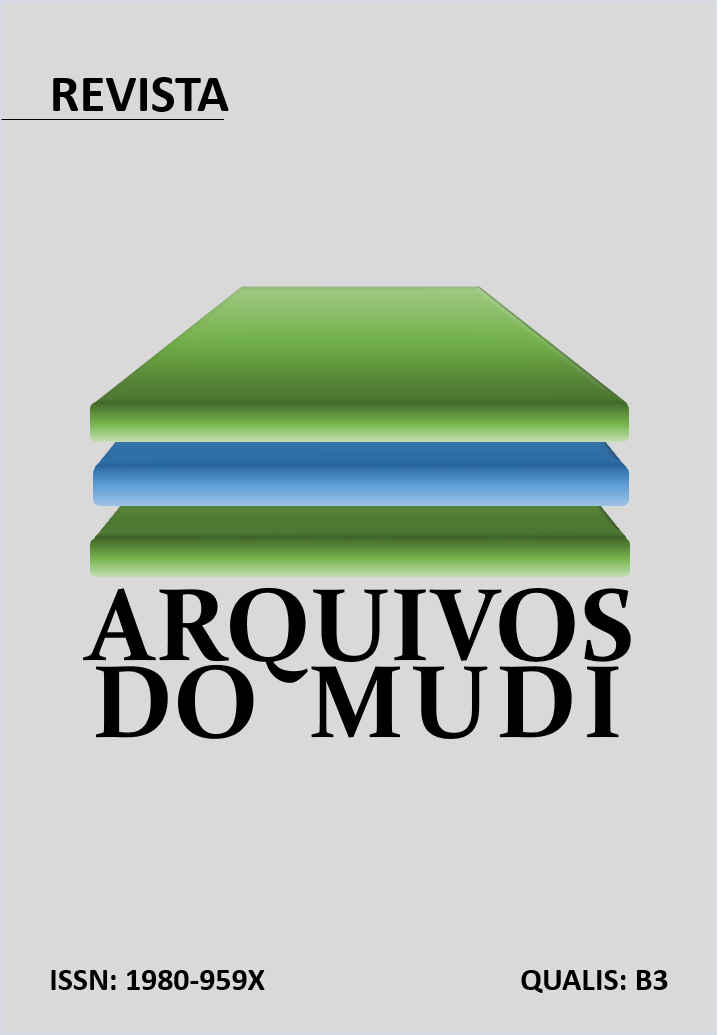A jornada dos biomateriais: dos primórdios empíricos à engenharia de materiais inteligentes
Resumo
Objetivo: esta revisão da literatura traça a trajetória histórica dos biomateriais, abordando a evolução conceitual, aplicações desde a antiguidade, o desenvolvimento da biocompatibilidade e a progressão por gerações. Metodos: as buscas foram realizadas nas bases de dados SciELO, PubMed e ScienceDirect, utilizando como critérios a relevância dos artigos e a qualidade do conteúdo apresentado. Resultados: a análise revela que o uso de materiais no corpo data da pré-história, progredindo de práticas empíricas para científicas, impulsionado por necessidades clínicas e eventos históricos, com a biocompatibilidade tornando-se central. Quatro gerações foram identificadas – inertes, bioativos/biodegradáveis, regenerativos e inteligentes – demonstrando crescente complexidade funcional. Conclusão: conclui-se que o campo evoluiu de usos rudimentares para uma ciência multidisciplinar, gerando avanços médicos transformadores, com a inovação contínua buscando materiais de interações biológicas cada vez mais controladas e benéficas.
Downloads
Referências
http://www.nibib.nih.gov/science-education/glossary/b. Acesso em 29 de abril de 2025.
Cohen J. Biomaterials in orthopedic surgery. Am J Surg. 1967; 114910:31-41. https://doi.org/10.1016/0002-9610(67)90037-2
Marin E, Boschetto F, Pezzotti G. Biomaterials and biocompatibility: an historical overview. J Biomed Mar Res Part A. 2020;108(7): 1617-1633. https://doi.org/10.1002/jbm.a.36930
Ratner BD, Hoffman AS, Schoen FJ, Lemons JE. Biomaterials Science: An Introduction to Materials in Medicine. Fourth Edition. Academic Press. 2020
Patel NR, Gohil PP. A review on biomaterials: scope, applications & human anatomy significance. Int J Emerg Technol Adv Eng. 2012, 2 (4): 91–101. ISSN 2250-2459
Fitzpatrick R, Fletcher A, Gore S, Jones D, Spiegelhalter D, Cox D. Quality of life measures in health care. I: Applications and issues in assessment. BMJ.1992; 305 (6861): 1074–1077. doi: https://doi.org/10.1136/bmj.305.6861.1074.
Pires ALR, Bierhalz ACK, Moraes AM. Biomateriais: tipos, aplicações e mercado. Química Nova, 2015.38(7):957-971. https://doi.org/10.5935/0100-4042.20150094.
Anastacio GA. A importância dos biomateriais e suas aplicações. Centro Universitario do Sul de Minas. Engenharia Mecânica. 2015. Varginha MG.
Ratner BD, Hoffman AS, Schoen FJ, Lemons JE. Ciência dos biomateriais: uma ciência em evolução – Esforço multidisciplinar. In: Biomaterials Science: An Introduction to Materials in Medicine. 2 ed. San Diego: Academic Press. 2004.
Costa SV. Os polímeros como biomateriais. Rev Soc Port Quim. 1986; Série II (24):50. https://doi.org/10.21577/0100-4042.20170781.
Crubézy E, Murail P, Girard L, Bernadou JP. False teeth of the Roman world. Nature. 1998; 391(6662): 29. https://doi.org/10.1038/34067
Bobbio A. The first endosseous alloplastic implant in the history of man. Bull Hist Dent . 1972; 20(1): 1–6. PMID: 4505221
Niemeyer TC. Efeito de elementos intersticiais nas propriedades fisicas e biocompatibilidade da liga Ti-13Nb-13Zr. 2008. 125 f. (Tese doutorado) – Universidade Estadual Paulista, Faculdade de Ciências de Bauru.
Kusy RP. Orhtodontic Biomaterials: from the past to the presente. Angle Orthod. 2022; 72(6):501-512. https://doi.org/10.1043/0003-3219(2002)072<0501
Riley JC. Rising life expectancy: a global history. Cambridge, England: Cambridge University Press 2001.
Bernardo MP, Paschoalin RT, Santos DM, Farinas CS, Correa DS, Oliveira Jr ON, Matosso LHC. Processamento e aplicação de biomateriais poliméricos: avanços recentes e perspectivas. Quim Nova, 2021; 44(10):1311-1327. https://doi.org/10.21577/0100-4042.20170781
Williams DF. Definitions in Biomaterials, Elsevier, Amsterdam, 1987.
Hench LL, Thompson I. Twenty-first century challenges for biomaterials. J R Soc Interface. 2010; 7 Suppl4(Suppl4):S379-391. https://doi.org/10.1098/rsif.2010.0151.focus.
Farag MM. Recent trends on biomaterials for tissue regeneration applications: review. ; Mat Sci. 2023; 58(2):527–558. https://doi.org/10.1007/s10853-022-08102-x.
Spezzia S. Biomateriais. Rev Fac Ciênc Méd Sorocaba. 2020;22(2):83-4 https://doi.org//10.23925/1984-4840.2020v22i2a8
Tang Z, Li X, Tan Y, Fan H, Zhang X. The material and biological characteristics of osteoinductive calcium phosphate ceramics. Reg Biomat.2018; 5: 43–59. https://doi.org/10.1093/rb/rbx024
Groen N, Guvendiren M, Rabitz H, Welsh WJ, Kohn J, de Boer J.. 2016 Stepping into the omics era: Opportunities and challenges for biomaterialsscience and enfineering. Acta Biomater. 2016; 34:133-142. https://doi.org/10.1016/j.actbio.2016.02.015
Holzapfel BM, Reichert JC, Schantz JT, Gbureck U, Rackwitz L, Noth U, Jakob F, Rudert M, Groll J, Hutmacher DW.How smart do biomaterials need to be? A translational Science and clinical point of view. Adv Drug Deliv Rev; 2013; 65(4):581-603. https://doi.org/10.1016/j.addr.2012.07.009
Amukarimi S, Rezvani Z, Eghtesadi N, Mozafari M. Smart biomaterials: From 3D printing to 4D bioprinting. Methods. 2022; 205:191-199. https://doi.org/10.1016/j.ymeth.2022.07.006.
Basu B, Haribabu GN, Xiao Y, Kalidindi SR, et al. Biomaterialomics: Data science-driven pathways to develop fourth-generation biomaterials. Acta Biomat. 2022;143: 1-25. https://doi.org/10.1016/j.actbio.2022.02.027.
DECLARAÇÃO DE ORIGINALIDADE E DIREITOS AUTORAIS
Declaro que o presente artigo é original, não tendo sido submetido à publicação em qualquer outro periódico nacional ou internacional, quer seja em parte ou em sua totalidade.
Os direitos autorais pertencem exclusivamente aos autores. Os direitos de licenciamento utilizados pelo periódico é a licença Creative Commons Attribution 4.0 (CC BY ): são permitidos o acompartilhamento (cópia e distribuição do material em qualqer meio ou formato) e adaptação (remix, transformação e criação de material a partir do conteúdo assim licenciado para quaisquer fins, inclusive comerciais.

Recomenda-se a leitura desse link para maiores informações sobre o tema: fornecimento de créditos e referências de forma correta, entre outros detalhes cruciais para uso adequado do material licenciado.

















